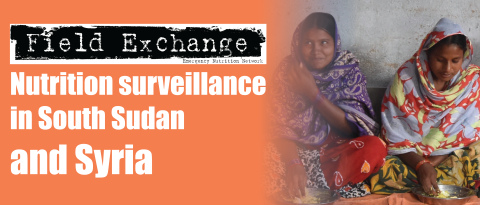Analysis of trends in SMART nutrition survey data from South Sudan between 2004 and 2016
Research snapshot1
Despite decades of nutrition and health interventions, emergency levels of global acute malnutrition (GAM) persist in former Northern Bar el Ghazal State in South Sudan; the reasons behind the persistently high levels have not been explored. This study aimed to identify and analyse changes in patterns of malnutrition and key factors associated with malnutrition in South Sudan from 2004 to 2016. Anthropometric data collected from children under five years of age through Standardised Monitoring and Assessment of Relief and Transitions (SMART) nutrition surveys from 2004 to 2016 were analysed to estimate seasonal differences in the prevalence of GAM (weight-for-height z-score (WHZ) <-2) and severe acute malnutrition (SAM) (WHZ <-3). Risk factors for GAM were explored using data collected in 2014 and 2015.
Results show that, in Aweil West and North, a reduction in GAM was observed between September 2004 (21.0%, CI 18.2-23.9) and November 2009 (16.2%, CI: 13.7-18.9). SAM prevalence remained largely unchanged, reducing by 0.9 percentage points from 3.2% (CI: 1.9-4.4) in 2004 to 2.3% (CI: 1.3-3.4) in 2009. The apparent decline in GAM likely reflects a seasonal difference, as the five-year overall mean GAM was 20.4% (SD: 0.403) and 17.5% (SD: 0.380) in pre- and post-harvest seasons respectively.
Data collected in 2014 and 2015 revealed that prevalence of undernutrition (weight-for-age) and stunting (height-for-age) were higher in males compared to females (p=0.008 and p=0.001 respectively); no significant gender differences were found in WHZ or GAM. Improvements were found in Aweil North in coverage of vitamin A supplementation (21.5% in 2014 to 57.7% in 2015); coverage of measles vaccination fell (51.6% to 41.4% during the same period). High morbidity rates were found, with almost two thirds of children reported as sick in the past two weeks (2015); however, the proportion of caregivers seeking treatment for sick children increased from 69% in 2014 to 81% in 2015. In multivariable linear regression modelling, not having been sick in the past two weeks (aOR 0.78, 95% CI 0.61, 0.99, p=0.047) and not having consumed juice (possibly associated with consumption of unclean water and unhygienic juice preparation) (aOR 0.67, 95% CI 0.45, 0.99, p=0.045) were protective against GAM after adjusting for all potential confounders. Data are cross-sectional, so interpretations should be made with caution.
This study highlights the impact of instability on the nutritional status of a generation, with the high prevalence of GAM and SAM remaining unchanged since 2004. Results suggest that focusing on care-seeking behaviours and hygiene practices may be beneficial in this population. Results also strongly suggest that the causes of malnutrition in this setting should be examined more comprehensively and that effective prevention programmes are designed that address the underlying causes of malnutrition.
Endnote
1Hogan et al. (2019) Analysis of trends in SMART Nutrition Survey data from South Sudan between 2004 and 2016. South Sudan Medical Journal 2019; 12(4):124-127


